|
|
|
|
|
|
|
Home Page |
PHILIPPINES TRAVEL GUIDE
This Philippine travel destinations guide gives you an overview of popular tourist spots in the Philippines. On each of the featured tourist destination on this travel guide, you will find places of interest on each destination, things to do and how to get there. We have included a page of travel tips, a list of fascinating Philippine festivals that runs year round, a collection of underwater scuba diving pictures, and a map of the Philippines for your reference.
The Philippines is a Southeast Asian archipelago of over 7,000 islands, is a captivating tourist destination boasting stunning beaches like Boracay and Palawan, vibrant cultural heritage showcased in festivals and historical sites, and a plethora of adventure activities like diving, surfing, and hiking. The country's diverse wildlife, delicious cuisine, and warm, welcoming locals add to the allure, making it an ideal destination for travelers seeking adventure, relaxation, and cultural immersion.
Communications and getting around the country is easy as most Filipinos
Filipinos are a fun-loving and friendly people. Throughout the islands, there are festivals celebrated everyday. Every travel destination on this guide is worth a visit. We have featured the most frequently visited tourist spots in the Philippines: the capital city of Manila; Boracay Beach; Baguio - the summer capital of the Philippines; Bohol Island; Corregidor Island; Cebu City; Davao City; Iloilo; the Islands of Palawan; the Hundred Islands of Pangasinan; Puerto Galera Beach; the old Spanish colonial city and UNESCO World Heritage Site of Vigan in Ilocos Sur; and the breathtaking Banaue Rice Terraces. PHILIPPINES TRAVEL VISA
Exceptions: Passport holders of Hong Kong Special Administrative Region (SAR), British National Overseas (BNO) and Macao Special Administrative Region (SAR) passport holders are only allowed up to 7 days stay without a visa. Foreign nationals from Brazil and Israel are allowed up to 59 days without a visa. ABOUT THE PHILIPPINESThe Philippines
is a newly industrialized county. The archipelago has a total land area of 300,000 square
kilometers or 115,830.60 square miles (about the same size as Italy). The 11 largest islands contain 94% of the total land area. The largest of these islands is
Luzon at about 105,000 km˛. It is where the capital city of Manila is located. The next largest island is Mindanao at about 94,600 km˛.
The Philippine islands are divided into three groups: Luzon, Visayas, and Mindanao. The Luzon islands include Luzon itself, Mindoro, Palawan, Masbate, and other
smaller islands. The Visayas is a group of several small islands, the largest of which are: Panay, Bohol, Negros, Cebu, Leyte, and Samar. Mindanao island includes
Mindanao island itself and the Sulu Archipelago, composed of Tawi-Tawi, Basilan and Sulu. Each island group has a Philippine destination worth visiting.
And if research enough, you'll find a fiesta celebration everyday of the year at different towns throughout the archipelago. Climate in the Philippines is hot, humid, and tropical. The average yearly temperature is around 26.5° Celsius.
Filipinos generally recognize three seasons:
Majority of Filipinos are Roman Catholic, comprising about 83% of the population (the reason why there are so many festivals in the country -commemorating the annual anniversary of the local patron saint). The rest are made up of Protestants, Iglesia ni Cristo, Moslems and Buddhist and other smaller denominations.
This guide previews the more popular tourist spots in the Philippines beginning with the City of Manila, then Baguio City, Banaue Rice Terraces, Batanes Group of Islands, Batangas, Boracay Island,
Cebu City, Corregidor, Davao City, Iloilo, Palawan Island, Pangasinan's Hundred Islands, Puerto Galera Beach, Bohol Islands and the World Heritage City of Vigan in Ilocos Sur. Mabuhay!
City of Manila |
Baguio City |
Banaue Rice Terraces |
Bohol Island |
Batanes Islands |
Batangas |
Boracay Beach |
Cebu |
Corregidor Island |
Davao City |
Iloilo |
Palawan Islands |
Pangasinan - The Hundred Islands |
Puerto Galera Beach |
Vigan, Ilocos Sur |
Free Underwater Scuba Diving Pictures |
Philippine Festivals - Fiestas | Travel Health Insurance |
Philippine Airlines |
Philippine Map |
Discover Philippines |
Travel Tips | |
|
|
|
|
2005-2025 © Philippine Travel Destinations Guide |
|


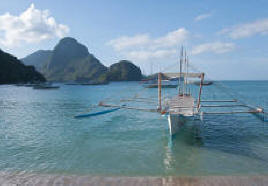 understand and speak English. Mobile phones are used throughout the archipelago. Foreigners can buy cheap "pre-paid" SIM cards for their cell
phones for temporary use in the country to avoid costly roaming charges. Also, foreign currency can easily be converted into Philippine Peso and
all major credit cards are accepted at big department stores, restaurants, bars and major establishments.
understand and speak English. Mobile phones are used throughout the archipelago. Foreigners can buy cheap "pre-paid" SIM cards for their cell
phones for temporary use in the country to avoid costly roaming charges. Also, foreign currency can easily be converted into Philippine Peso and
all major credit cards are accepted at big department stores, restaurants, bars and major establishments.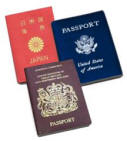
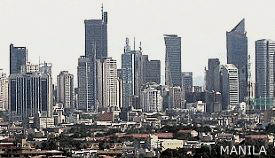 provided that they have valid tickets for their return journey to their port of origin or to their next travel destination port and that their
passports are valid for a period of at least six (6) months. Extension of stay is available at the
provided that they have valid tickets for their return journey to their port of origin or to their next travel destination port and that their
passports are valid for a period of at least six (6) months. Extension of stay is available at the
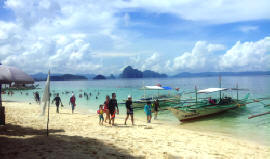 The Philippines is approximately
800 kilometers from the Asian mainland and is located between Taiwan and Borneo.
The Philippines is approximately
800 kilometers from the Asian mainland and is located between Taiwan and Borneo.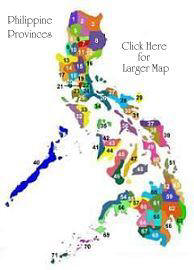
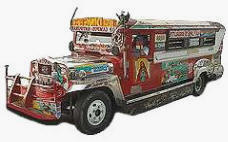
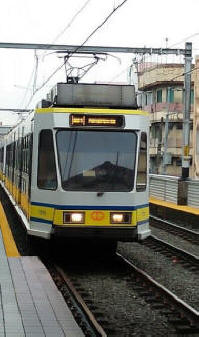 Travel within the Philippines not difficult, if
you don't mind riding the sometimes rickety public transportation. There are all kinds of transportation available
to tourist and locals: Airplanes and ferries for inter-island transfers, buses & taxis ply in major cities all over the Philippines and the ubiquitous jeepney can be found everywhere.
In Metro Manila, modern light rail transit is available on major roads. To visit the provinces, there are several bus companies in Metro Manila that plies to all regions of the country (to the North e.g Ilocos region to the South e.g. Davao City). In tertiary roads & small rural towns the jeep & tricycle is the transport of choice.
Travel within the Philippines not difficult, if
you don't mind riding the sometimes rickety public transportation. There are all kinds of transportation available
to tourist and locals: Airplanes and ferries for inter-island transfers, buses & taxis ply in major cities all over the Philippines and the ubiquitous jeepney can be found everywhere.
In Metro Manila, modern light rail transit is available on major roads. To visit the provinces, there are several bus companies in Metro Manila that plies to all regions of the country (to the North e.g Ilocos region to the South e.g. Davao City). In tertiary roads & small rural towns the jeep & tricycle is the transport of choice.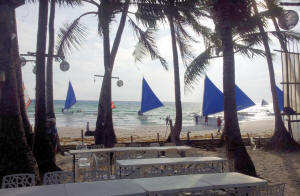 The official languages in the Philippines are Filipino and English. Filipino which is based on the Tagalog dialect (the dialect of national capital region), is the national
language. English is also widely used and is the medium of instruction in higher education in the Philippines. There are also 76 major local languages and more than 500 different
minor dialects throughout the archipelago. Unlike most Asian countries, foreigners will not have a difficult time communicating during their travel within the country as basic
English will be understood even in rural areas.
The official languages in the Philippines are Filipino and English. Filipino which is based on the Tagalog dialect (the dialect of national capital region), is the national
language. English is also widely used and is the medium of instruction in higher education in the Philippines. There are also 76 major local languages and more than 500 different
minor dialects throughout the archipelago. Unlike most Asian countries, foreigners will not have a difficult time communicating during their travel within the country as basic
English will be understood even in rural areas.
